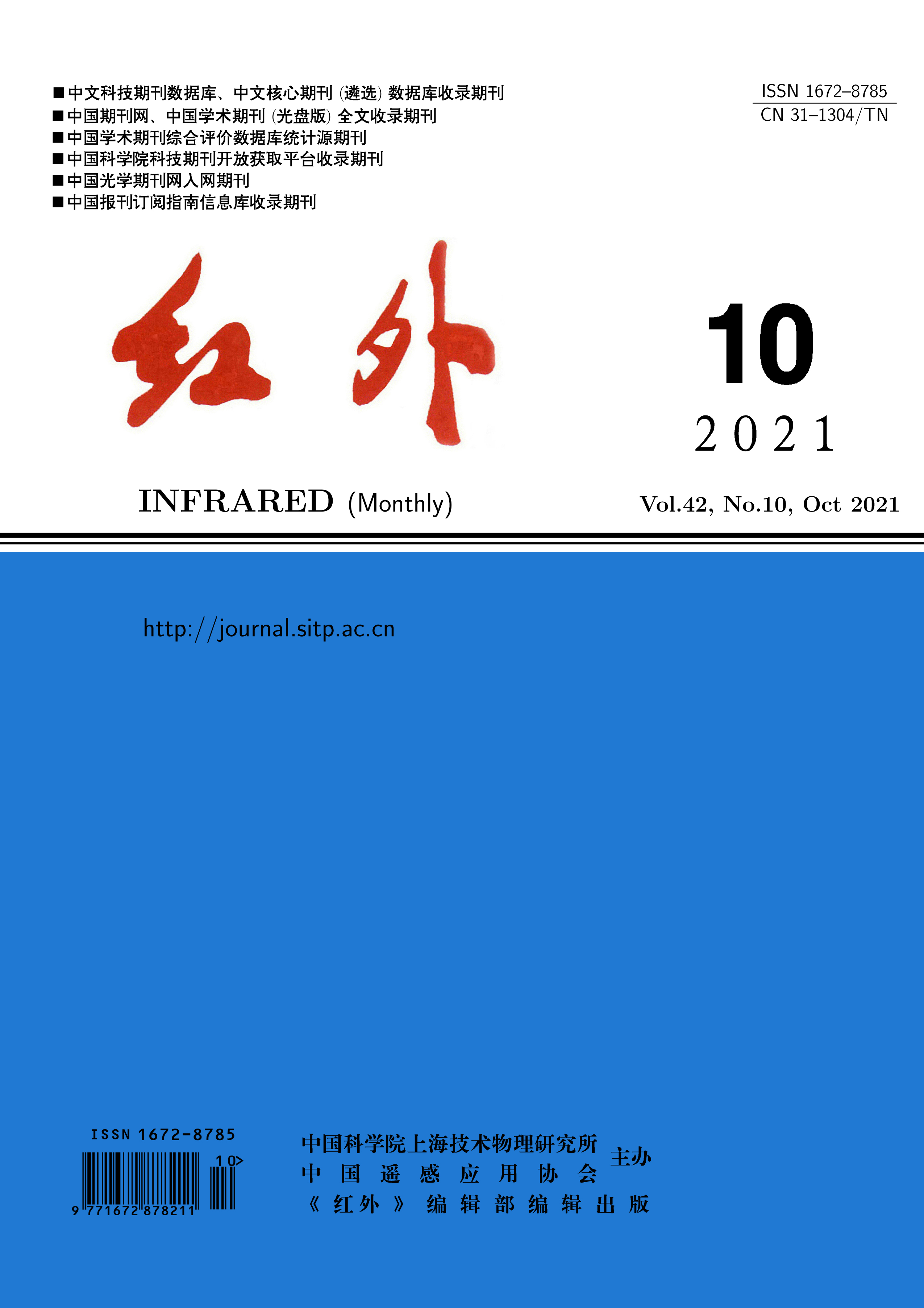
The latest research progress of SW/MW dual-band mercury cadmium telluride(MCT)materials and devices based on molecular beam epitaxy(MBE)is reported. High-quality SW/MW dual-band MCT materials are grown by the MBE method, and the surface defect density is controlled below 300 cm-2 by improving the material quality. On this basis, the chip fabrication process is further optimized, especially in terms of reducing the pixel pitch. A 320×256 SW/MW dual-band MCT infrared detector assembly is fabricated based on the above-mentioned various material and device processes. The results show that the test performance and imaging effect of the assembly are good.
After years of research and development, the cooled mercury cadmium telluride(MCT)middle-wavelength infrared(MWIR)detectors have achieved mass production capacity, and the array specifications have also developed from the initial 320×256 to the current 1280×1024 megapixel level. At present, as the detector product level of Wuhan Guide Infrared Co., Ltd.(hereinafter referred to as "Guide Infrared company")is continuously improving, thermal imaging systems based on infrared detectors are widely used in airborne, shipborne, land combat, handheld observation and other military equipments. Taking the 640×512/15 m MCT MWIR detector as an example, the engineering application of Guide Infrared company′s detector products is introduced, and the problems that need to be solved during the development of the detectors are analyzed. Finally, the future development and application direction of the detectors is pointed out.
Mercury cadmium telluride materials are the basis for the manufacture of infrared detectors. High-performance detectors have increasingly higher requirements for mercury cadmium telluride materials. In order to improve the performance of the device, the electrical performance of the mercury cadmium telluride materials must be improved. Doping is a good choice. The doping of mercury cadmium telluride materials is divided into n-type and p-type doping. For n-type doping, In is an ideal dopant, and the current research on In doping is relatively mature. In comparison, the research on p-type doping is not so in-depth. Hg vacancy, Au and As doping are common p-type doping methods in mercury cadmium telluride materials. By analyzing and summarizing some relevant documents in recent years, the research progress of Hg vacancy, Au and As doping in HgCdTe materials is introduced.
HgCdTe(MCT)infrared detectors have achieved very rapid development in recent years. With the continuous progress of related technology, the requirements for detectors are getting higher and higher. The surface of the MCT detector is very sensitive to factors such as impurities, defects, damage and temperature. Many performances of the device can be directly determined by the properties of its surface, so the passivation of the surface of the MCT material is regarded as the key process for the preparation of infrared detectors. In order to improve the surface stability of the device, the most commonly used method is to passivate the surface of the MCT material. This article mainly introduces the common passivation methods on the surface of MCT materials, focuses on the common dielectric film passivation methods combined with domestic and foreign literature, and prospects for future work.
During crystal growth, the solid-liquid interface shape is related to the state of heat flow nearby. The factors that affect the direction of heat flow in the solid-liquid interface include external temperature field distribution and material thermal conductivity. The commonly used solid-liquid interface control methods are summarized, and the CGSim temperature field simulation software is used to simulate three crystal growth processes using different support structures. At the same time, the solid-liquid interface shapes inside the seed area and the cone area are compared. The results show that the support structure has a greater influence on the control of the solid-liquid interfaces inside the seed area and the cone area. Using a suitable support structure design and appropriate selection of materials, with the adjustment of the external temperature field, the ideal convex solid-liquid interface shape can be obtained.
In the previous work, through discrete cosine transform and digital refocusing, the terahertz optical field image preliminarily realized image denoising,as well as foreground and background segmentation. In order to further obtain higher quality terahertz optical field original data and achieve more accurate depth segmentation, the experimental scheme and processing method are improved, and a terahertz optical field depth estimation method based on epipolar plane image is proposed in this paper. On the basis of terahertz image characteristics, the relationship between depth and disparity is given, and the global depth map is constructed by using local parallax and confidence, so as to achieve depth estimation. Finally, experiments are performed by collecting terahertz light field data from camera array. Results of accurate refocusing on different planes and a high-resolution depth estimation map are obtained, and the depth estimation of terahertz optical field imaging is realized.
Flexible dye-sensitized solar cells (FDSSCs) have many advantages such as light weight, good flexibility and impact resistance, which have attracted extensive attention of researchers. As an important part of the battery, the photoanode is the region of electron excitation and collection, and its performance determines the conversion efficiency of the battery. Firstly, the structure and working mechanism of FDSSC are briefly introduced, then the research progress of the cell photoanode is reviewed, and the preparations of the plastic and metal base photoanodes are emphatically discussed. Finally, the future development opportunities and challenges of FDSSC are summarized, so as to provide reference and help for the preparation of the battery.










